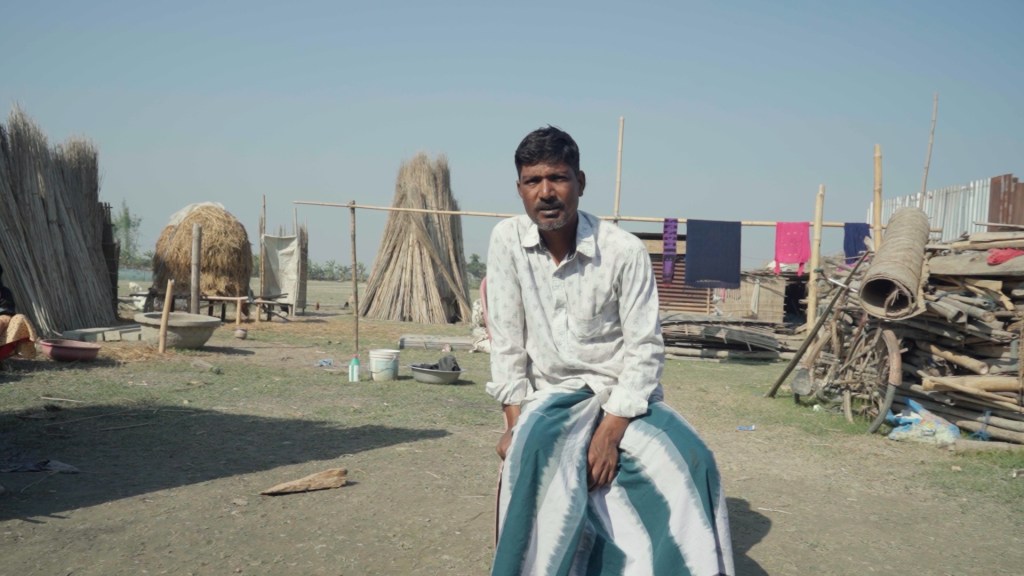It’s 9 PM in India and on the screen in front of me, two politicians are hollering at each other. Finally, one of them gets the upper hand. “Don’t be a fisherman,” he screams at his opponent, “don’t be a fisherman.” His opponent flails, tries to regain some initiative, but it’s too late, “don’t be a fisherman” has turned into a chant, his opponent has won this round. But this is The Newshour, with Arnab Goswami, and on The Newshour, with Arnab Goswami, there’s only one winner. That winner is the man the whole country knows only as Arnab.
If you’ve never seen The Newshour , then imagine nine disembodied heads surrounded by flames screaming at you in a format and color configuration that looks like a slot machine. Then imagine one large head in the middle that controls all the other heads and shouts more than them and at a greater volume. That’s Arnab, the one shouting head to rule them all. His show is Fox News on steroids. It makes most other news programs look like an official broadcast of a 19th-century royal coronation.
Videos by VICE
And it is a phenomenon: The Newshour is the most-watched English-language news program in India by miles and miles. The show claims, on average, 76 percent of English language news viewers in its time slot. Arnab is accepted to be the best-paid news anchor in the country.
Remixes of Arnab shouting hit the dance floor at regular intervals, some of them bangers—”Arnab Trap,” for example—some of them more thoughtful, emotional numbers, like Interrupception, which features Arnab shouting “I’m not stupid” again and again over a piano loop before turning the name of the person he’s shouting at—Tamil politician Subramanian Swamy (also fond of shouting)—into a kind of melancholy refrain.

The Newshour provides rich material for this stuff because it is so often the same and because it provides such a depressing, hysterical example of the direction news programming has traveled in this century. Two “burning” current affairs issues are discussed on the show, with Arnab conducting a panel of guests who, within minutes, are doing nothing more than making LOUD NOISES, a la Brick Tamland in Anchorman. On the screen, a graphics onslaught includes a dizzying array of flashing signs, hashtags, slogans, and flames marking the “Burning Question.” Arnab then uses the full weight of his news anchor privilege to shout louder than everyone else.
His shouting is elevated, though, to a kind of higher truth. The show is billed as “Super Primetime” and its host is trumpeted by the channel, Times Now, as the man who holds the powerful to account, the man who is truly standing up for the people of India. This means that it is never Arnab who wants an answer from a politician, it is “India,” or “the people,” or “the country.” The country’s perceived enemies are viciously attacked: Pakistan is derided as a “terrorist,” “rogue,” and “failed” state (in fact, a friend of Arnab’s says he’d be happy to see Indian bombs fall on Islamabad); the novelist Arundhati Roy was branded “disgusting”; a Greenpeace activist was mocked for wanting to travel to the UK.
“Do not give me generalities tonight!” Arnab shouts at his guests, before letting them give him generalities. On one show, discussing the arrest in Indonesia—after more than two decades—of the on-the-run Mumbai gangster Chhota Rajan, Arnab persistently threatened to reveal the contents of classified government documents that allegedly linked a number of top politicians to Rajan. “I’m really tempted to spill the beans,” Arnab roared, again and again.

But Arnab never did spill the beans and he never does. Instead, he uses the privilege of his Western education—he had stints at both Oxford and Cambridge—and his position at the heart of the English-speaking media elite to create a lot of sound and fury which does nothing for the ordinary people he claims to champion because, in the end, nothing is really discussed and no one is really made to answer any questions. As the Indian historian and journalist Vijay Prashad tells me, Arnab “pretends to be the Grand Inquisitor for the People. But of course once the cameras are off, the bonhomie resumes. This is more theater than politics. The politicians get the visibility, and Arnab gets the ratings.”
No politician is a better example of this trade-off than Sambit Patra, spokesperson for the BJP, India’s ruling party. Patra is on The Newshour all the time. In fact, if you flick through any news channel at any hour of the day the chances are you’ll find Patra sitting there in his Modi jacket—he basically spends his life moving from one studio to the next. He is the BJP’s sin eater: letting Arnab shout at him and admonish him, taking the blows for Narendra Modi because he knows they don’t really mean anything. In the world’s largest democracy, The Newshour provides the potent illusion of democracy: The people want their often corrupt rulers to be held to account, they want to see them being shouted at. But while Arnab dishes out the punishment, it amounts to nothing. And in his style is being aped as desperate competitors try and claim some of his massive audience.
The phenomenon has gone worldwide, providing patronizing lulz aplenty from non-Indians. But of course this kind of jingoistic nationalism and over-hyped adversarial programming, which loses truth and nuance behind an avalanche of shouting, is hardly a uniquely Indian phenomenon. It seems increasingly to be a product of democratic societies that are replacing democracy with its loud-mouthed illusion.
Follow Oscar Rickett on Twitter.



